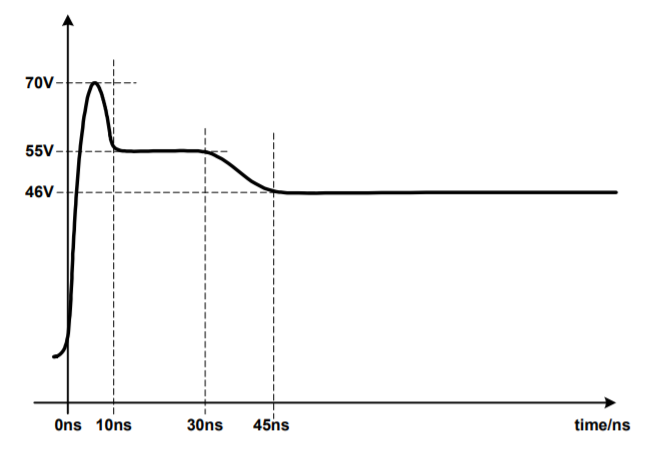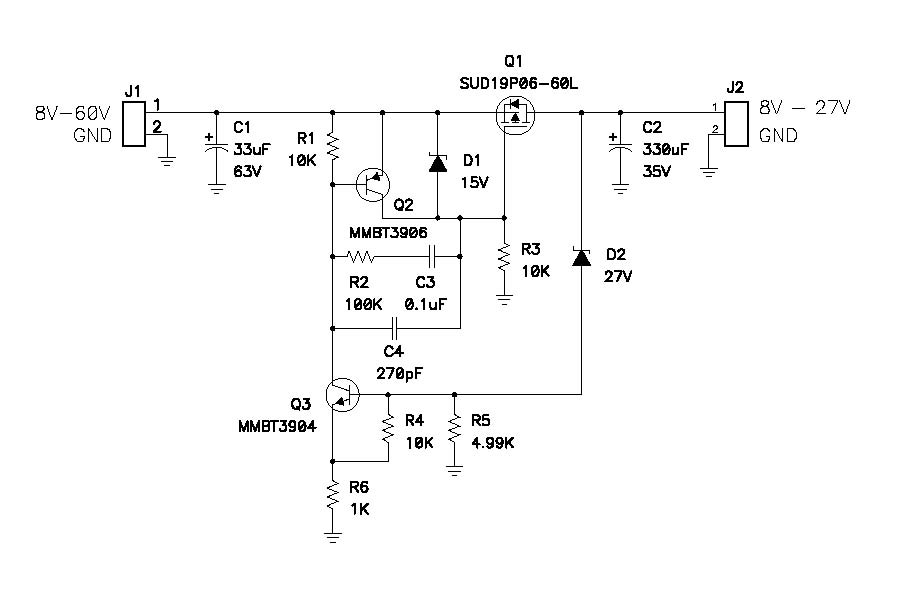SLVAE36A September 2018 – July 2021 LM43600 , LM43601 , LM46001 , LM46002 , LM5160A , LM5161 , LM5165 , LM5166 , LM61460-Q1 , LM73605 , LM73605-Q1 , LM73606-Q1 , LM76003 , LMR33620 , LMR33630 , LMR36006 , LMR36015 , LMR36500 , LMR36501 , LMR36502 , LMR36503 , LMR36506 , LMZ36002 , LMZM23600 , LMZM23601 , LMZM33602 , LMZM33603 , LMZM33606 , TPS54218 , TPS54360B , TPS54418 , TPS54424 , TPS54560B , TPS54618 , TPS55010 , TPS62148 , TPS62821 , TPS62822 , TPS62823 , TPS82130 , TPS82140 , TPS82150 , TPSM365R15 , TPSM365R3 , TPSM365R6
2 Line Voltage Transients
Line transients can come from motors and relays in the system, and can cause an excessive voltage spike on the input voltage line. Voltage spikes can also come from power rails or signal transmission lines that are routed longer distances causing problems to the DC/DC converters or interface circuits. Because PLCs are employed on factory floors that may have motors or other inductive loads and loops, they are susceptible to line transient spikes. Figure 2-1 shows an example of a line voltage transient which may have a short duration, but can severely damage circuits inside PLCs without proper protection.
 Figure 2-1 Example of a Fast Line Voltage Transient That Can Damage PLC Circuits
Figure 2-1 Example of a Fast Line Voltage Transient That Can Damage PLC CircuitsA protection circuit, or clamping circuit shown in Figure 2-2 would typically be used for protecting the load from voltage spikes. The diode D2 is used to set the clamp voltage and a pass FET is used to allow the current to flow to the load protected. Unfortunately, these circuits take up space and require more additional circuitry. As semiconductor process technology advances, suppliers are able to offer higher input voltage converters to integrate components and save space. It is true that a 28-V converter rated at 3 A is a less expensive than a 60-V, 3-A converter with the same MOSFET resistance. But the reliability and space savings of a higher rated converter is worth the small added price. Instead of relying on voltage protection circuits, non-isolated synchronous buck converters with integrated FETs are available with ratings up to 100 V to protect downstream circuits.
 Figure 2-2 Discrete Voltage Clamping Circuit
Figure 2-2 Discrete Voltage Clamping Circuit